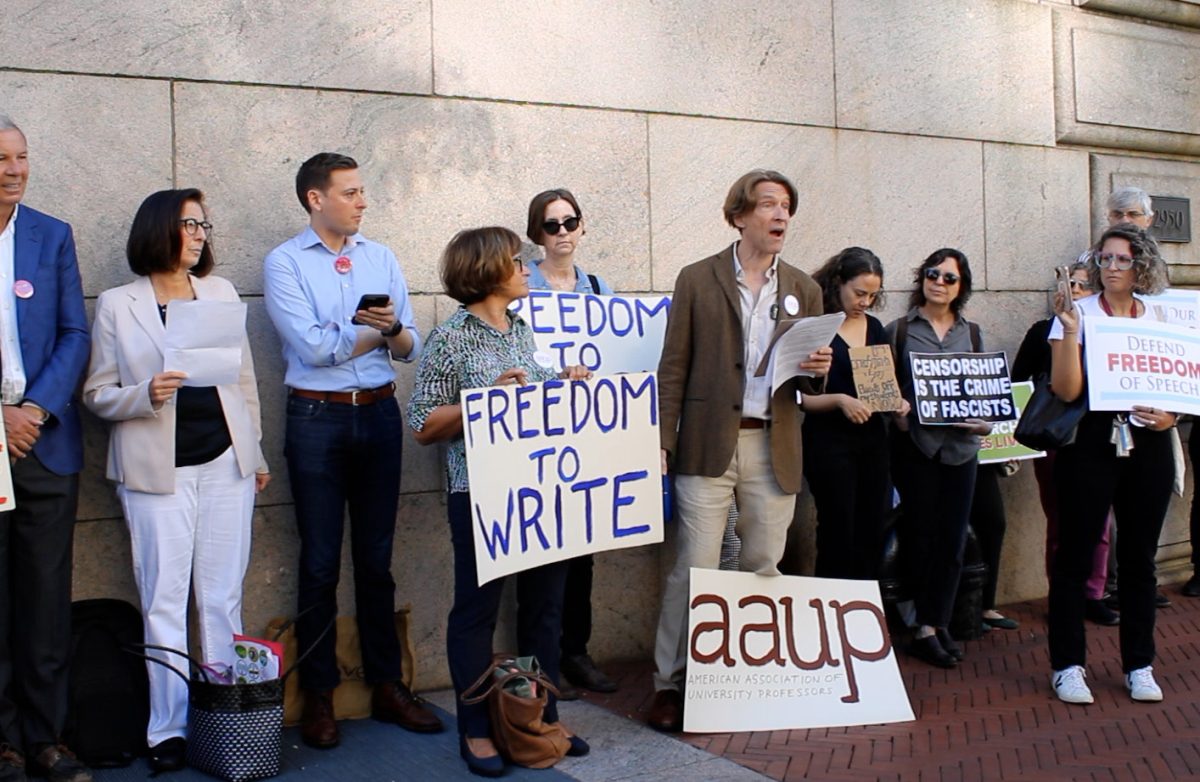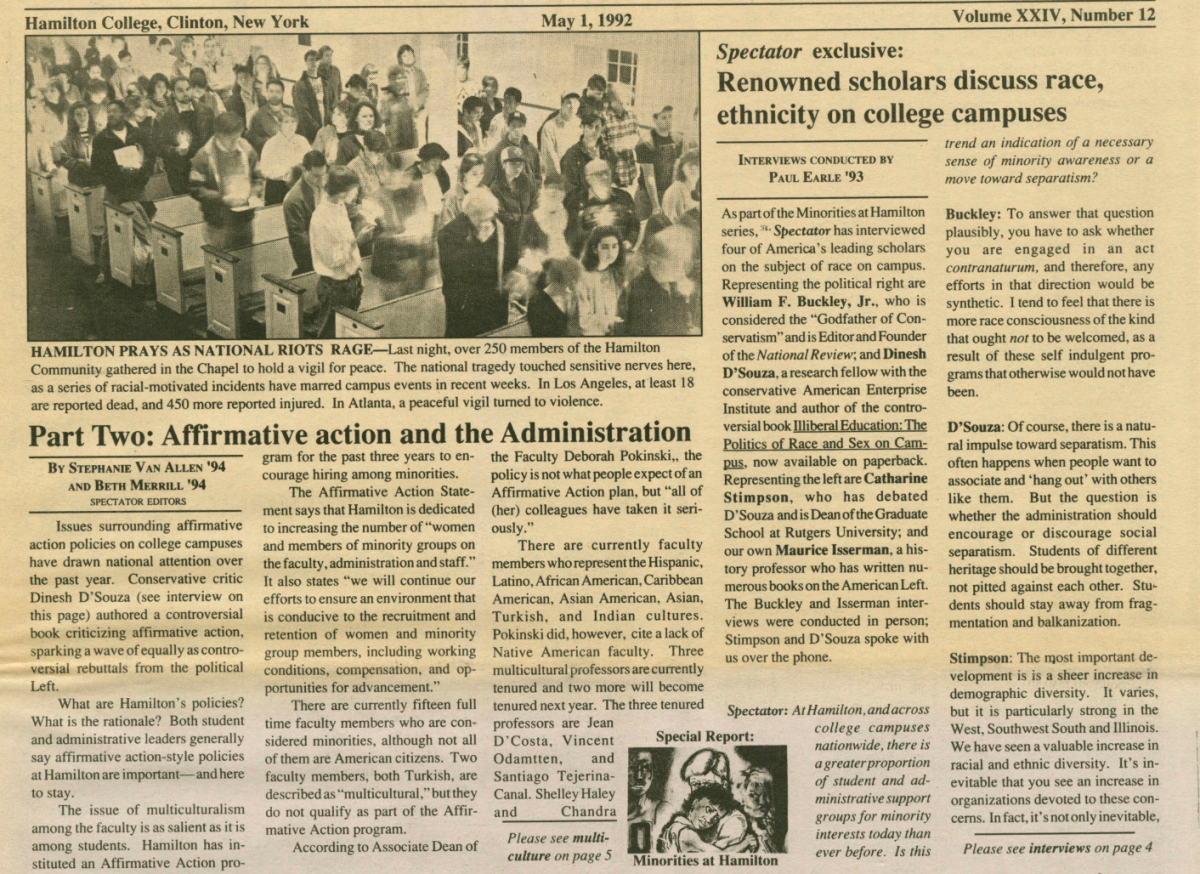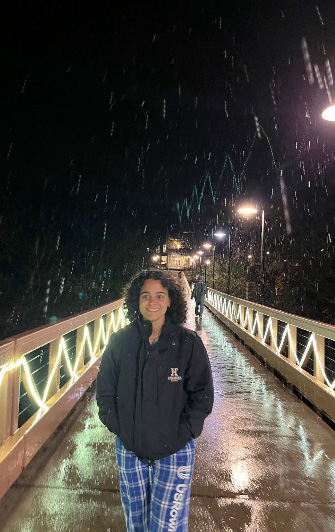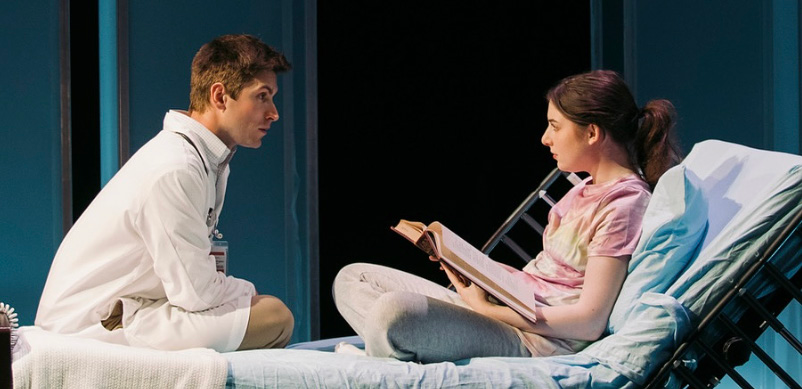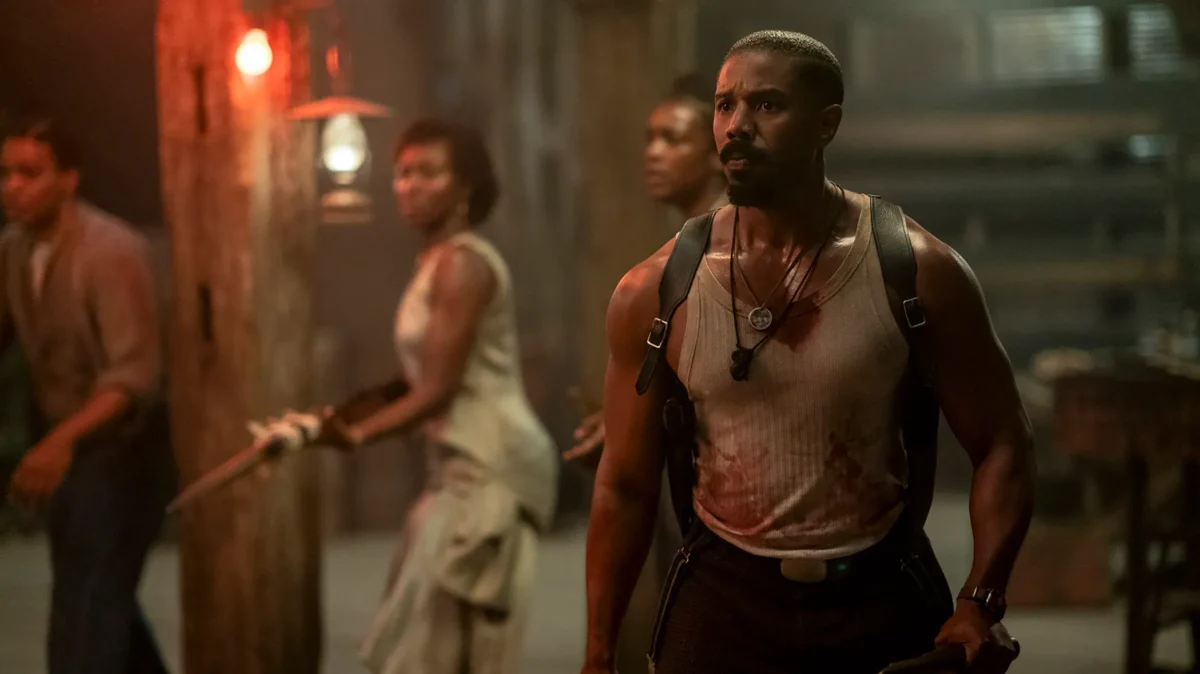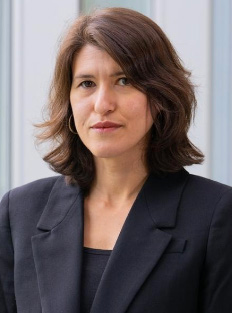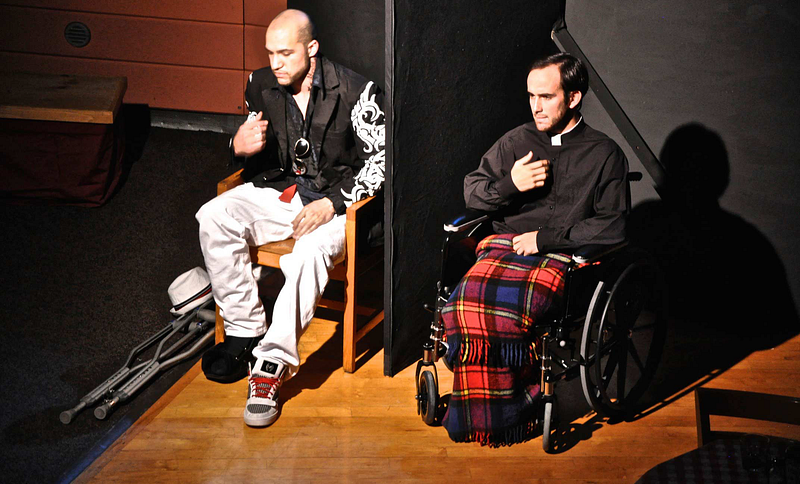
Our Lady of 121st Street
has been a fixture of Hamilton College’s Theatre Department for years. The above photo shows a performance from 2011. Photo courtesy of Hamilton College
All the world’s a stage, so that stage better be set! From Nov. 7 to 16, some of Hamilton’s finest performers acted upon and around a realistic and visually alluring set. The set of
Our Lady of 121st Street
— designed by Tobin Ost, constructed by Tom Marhenke with his team of builders, lit by Jess Buttery along with her team and painted by Margot Delany — transformed the Romano Theatre into a funeral parlor clad with a deep red rug, plush chairs and a glimmering teal casket. Audience members walked into the theater and were immediately immersed in the scene, processing through the funeral home, past the casket and into their seats.
I am one of eight of Tom Marhenke’s employees who together built the set of
Our Lady
. This on-campus job gives me an opportunity to explore my interest in theater without putting myself on the stage. Throughout the semester, I cut, drilled, glued, stapled and painted, watching a large-scale piece of art become a cohesive and intricate set. In November, I got to see this artwork come alive as the artists acted upon the set with which I was intimately familiar with and connected.
Ost’s creative yet technical mind formulated the set to be visually appealing, compliment the script and absorb the audience into the play. In an interview with Ost, he explained the intention and intricacies of the design. Every element of the set was researched and thoughtfully arranged to invite the audience into the world of
Our Lady
.
Rows of seating faced each other, and the lighting was just bright enough that attendees could see one another across the stage. Ost remarked that the seating was configured in an alley shape — which sets the performance space between the rows of audience — because “we essentially mirror the visual and aural aspects of laughter in group settings.”
Our Lady
is a dark comedy; as a result, it is sometimes difficult to know when it is appropriate to laugh. When one audience member laughed, the others could see and hear it and they were thus encouraged to join in.
Ost “established the reality of the space” by having the audience enter through an alcove of the funeral parlor “almost as if they were mourners” along with the characters. There is no distinct division between the audience and the stage; viewers feel as if they are almost sitting and mourning with the actors. Creating a realistic space was important to Ost’s design. After looking over hordes of research regarding the look of funeral homes, Ost remembered pairs of stuffed chairs in the Bristol Center’s Dwight Lounge which seemed to perfectly convey the “quiet, warm colors often found in funeral homes, and they became the anchors around which the rest of the colors [of the set] evolved.” Color is an essential tool used to convey a feeling of comfort and place. It is used to tell the audience what the feeling of the show will be and is also meant to mimic the colors of real funeral homes.
The “aggressive” red of the carpet reflects the feeling of “some pretty heated exchanges between characters.” While the other colors of the set are fairly muted and comforting, the deep red carpet stuns the viewer and alludes to the intensity of the play. The more muted colors seen in the rest of the set were tied into the rug through the attachment of decorative borders, which featured tan, brown and rose coloring. Marhenke’s team made these borders by cutting a large patterned rug into thick strips with a sharp knife. We then stapled the border alongside the red rug into the floor of the theater. The pieces appeared to be congruent; one actor remarked that they were shocked to find out that the carpet was made of two separate rugs.
A set creates a home for a production. Being a part of the construction team is a meaningful responsibility for me as I get to create this place setting. Watching the production of
Our Lady
was a sweet reward to conclude building process in which I saw Tobin, Tom, Jess, Margot and my teams’ hard work lit up by a thought-provoking and moving story told by incredibly talented actors.



